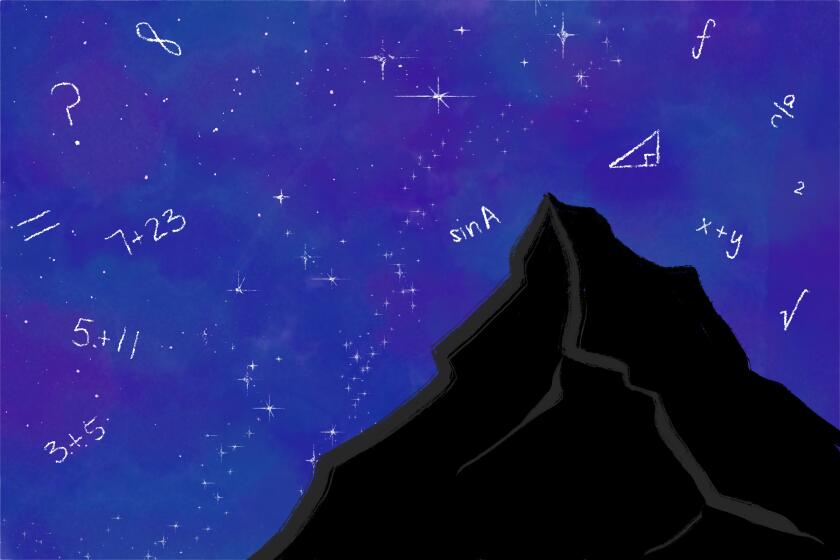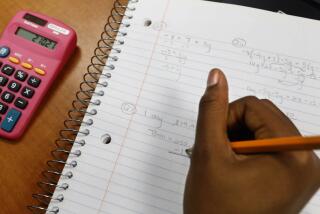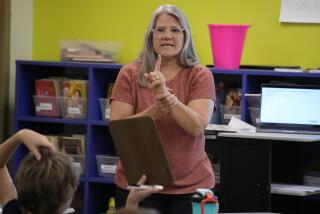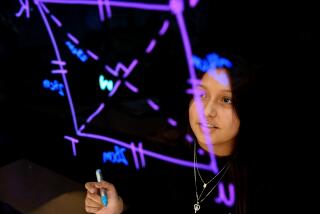Op-Ed: Math anxiety is real — and we’re passing it on to our kids
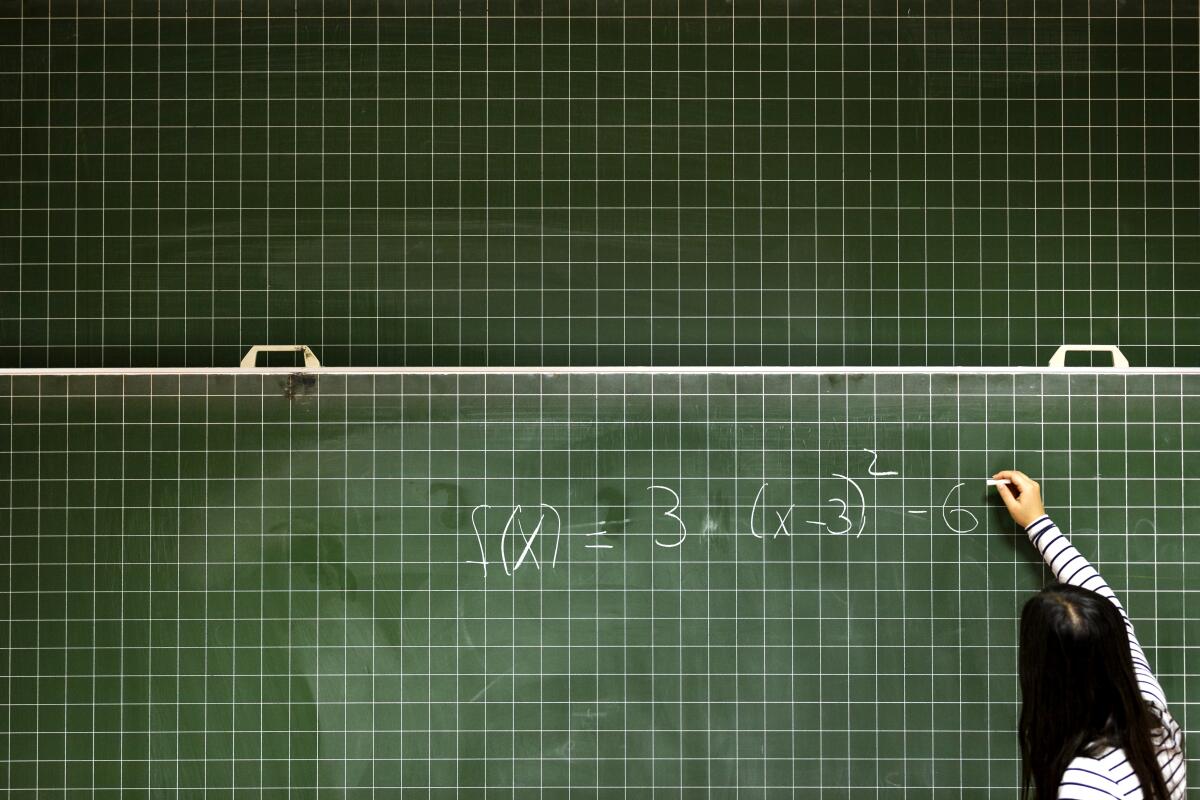
The disruptions to children’s schooling over the past two years have caused millions of American parents to come to an unexpected revelation: They are not as good at math as they had hoped. Nothing exposes your lack of ability with numbers like trying to teach your own child about fractions. But there is an upside: We now have more direct experience and understanding that can help improve the nation’s math literacy.
Math doesn’t come easy, no matter how clever you are. Leonardo da Vinci was a huge fan of mathematics. One to-do list in his notebooks included the task “learn multiplication from the root from Maestro Luca”; his friend Luca Pacioli was a renowned teacher of mathematics. The notebooks also show that Da Vinci was clumsy at arithmetic and couldn’t do fractions. He could never grasp, for instance, that dividing a number by one-quarter is the same as multiplying by four, resulting in a higher number than the original.
Knowing that even a genius’ brain sometimes fails with numerical concepts can be reassuring. No animal species — ours included — does mathematics naturally. Most human societies have trained successive generations to deal in numbers simply because math’s value was understood.
When kids ask why they need to know algebra or trigonometry, we tell them these tools are useful. This is not true and it makes math dreary.
Proof that our brains are not hard-wired for math comes from the fact that learning to count involves co-opting the neural circuits that keep track of our fingers. MRI studies show that doing arithmetic sends blood coursing through these regions of the brain. Interestingly, once we’re good at math, it takes less blood to get the job done. This is almost certainly why every numerate human society counts on their fingers (and sometimes toes).
But, after learning the basics, we tend to flounder. That’s because counting numbers is only the first of the unnatural acts required to understand mathematics. Fractions are particularly cruel because to add, multiply and divide them we have to learn a whole new set of rules, dismantling our hard-won understanding of how numbers work.
Mathematical concepts are often taught as if they are self-evident or God-given. But they were tough to figure out to begin with and can be difficult to explain to even the sharpest minds. It makes sense that they remain hard to understand for many people. Yet we expect 11-year-olds just to comprehend them and move on.
Acting as if math isn’t challenging is problematic. It can lead to “math anxiety” that cascades down through generations. Around 93% of U.S. adults indicate that they suffer from some level of negative emotions — and sometimes physical symptoms such as clammy hands or elevated heart rates — when asked to interact with mathematical problems.
That’s not just a problem for the afflicted, because math anxiety is contagious. Research shows that parents with high levels of math anxiety pass that fear on if they try to help their children with mathematics homework. Those children end up learning less math than they would if their parents hadn’t tried to help. The same goes for math-anxious teachers — a 2020 study showed that elementary school teachers with math anxiety have a detrimental effect on their students’ achievements.
Many elementary school teachers are anxious about teaching math, and studies show their students learn less from them. Math should be taught by specialists starting in kindergarten.
Something about how math is taught in America has led to a situation where more than 30% of U.S. adults are defined as having “low numeracy.” That means they can’t make calculations with whole numbers and percentages, estimate numbers or quantity or interpret simple statistics in text or tables. Counting, sorting and basic arithmetic are their limit. Only 8% of Japanese adults and 13% of adults in Finland have the same limitations. Much of the disparity is likely due to the higher pay, more extensive training and better resources given to teachers in those two countries.
At the other end of the achievement scale, just 39% of U.S. adults performed at or above numeracy levels where they could do things like gain useful information from a graph or a thermometer. That’s compared to 63% in Japan and 58% in Finland.
These mathematical high-achievers are the people equipped for technical careers such as engineering or software development — creating and innovating in areas that have higher pay and encourage a country’s economic growth.
The first step to developing a more numerate, less math-anxious population is to be honest about the fact that math is hard and unnatural, and takes time, energy and effort to learn. Finding math difficult should not be a source of shame. Struggling students need time, help and empathy. They also need accessible opportunities to improve, such as the provision of learning steps that are smaller than usual, and catch-up classes.
We also need to redefine what counts as necessary for success. Most people will not use circle theorem outside of school. Only a tiny percentage will use calculus after they have learned it. Solutions for a quadratic equation, which was invented as a Babylonian tax-calculation tool, are generally not useful in the 21st century.
Don’t get me wrong: Algebra, calculus and geometry are wonderful things and should be accessible to students in the same way we make certain courses in literature, history and the arts accessible — not required — to those who are interested.
But let’s stop pretending that some of these math courses teach important life skills that must be learned before an education can be considered complete. If we can do that, we might begin to fix the problems that our dysfunctional relationship with math has created.
Michael Brooks is the author of “The Art of More: How Mathematics Created Civilization.”
More to Read
A cure for the common opinion
Get thought-provoking perspectives with our weekly newsletter.
You may occasionally receive promotional content from the Los Angeles Times.
